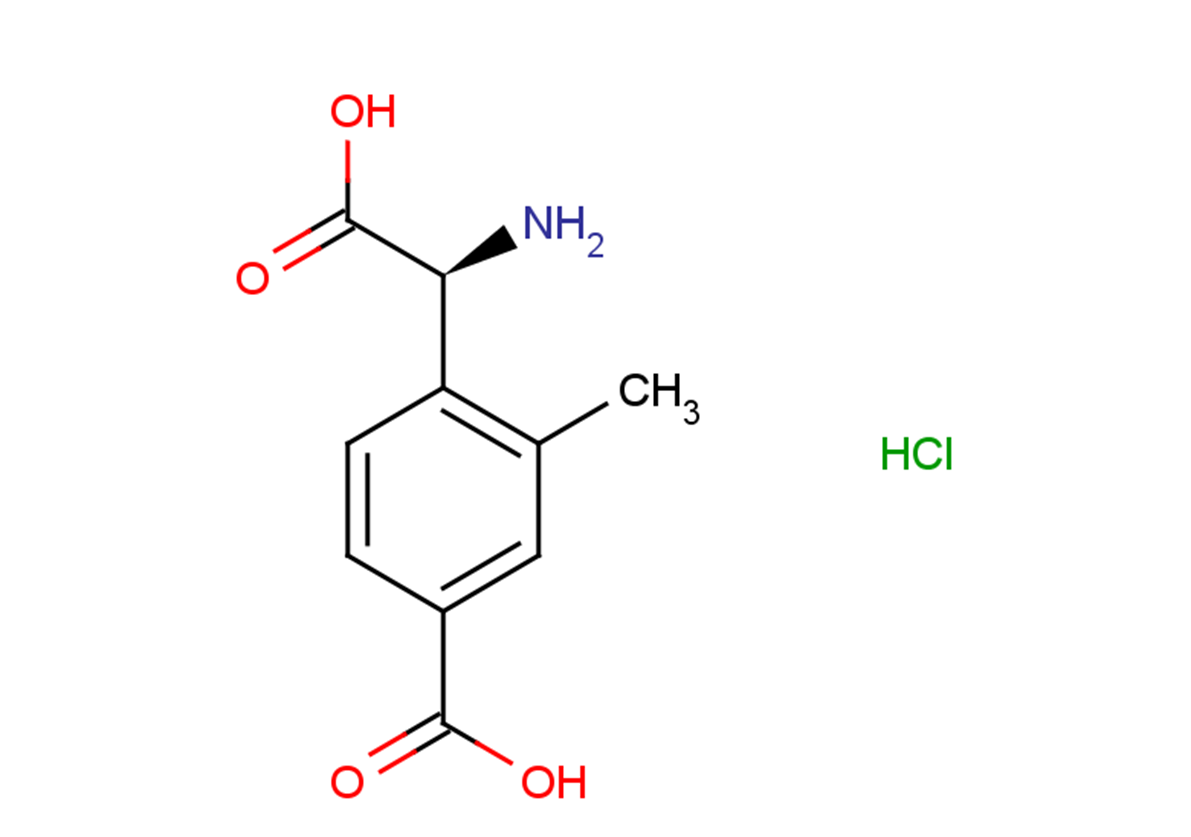Powder: -20°C for 3 years | In solvent: -80°C for 1 year


LY367385 hydrochloride is a potent and selective mGluR1a antagonist with an IC50 value of 8.8 μM for inhibiting quisqualate-induced phosphoinositide (PI) hydrolysis, showing significantly higher selectivity compared to its <100 μM IC50 value for mGlu5a. This compound exhibits neuroprotective, anticonvulsant, and antiepileptic effects [1] [2].

| Pack Size | Availability | Price/USD | Quantity |
|---|---|---|---|
| 500 mg | 10-14 weeks | $ 1,986.00 |
| Description | LY367385 hydrochloride is a potent and selective mGluR1a antagonist with an IC50 value of 8.8 μM for inhibiting quisqualate-induced phosphoinositide (PI) hydrolysis, showing significantly higher selectivity compared to its >100 μM IC50 value for mGlu5a. This compound exhibits neuroprotective, anticonvulsant, and antiepileptic effects [1] [2]. |
| In vitro | LY367385 combined with N-methyl-D-aspartate (NMDA) during the toxic pulse attenuates neuronal degeneration in a concentration-dependent manner with a maximal reduction of NMDA toxicity ranging from 40 to 60%. LY367385 exhibits greater efficacy than LY367366 and neither of these compounds influenced neuronal viability per se. LY367385 shows potent neuroprotective effects, with leading a 50% reduction in (S)-3,5-Dihydroxyphenylglycine (DHPG) potentiation at a concentration of 10 nM. Under experimental conditions at higher concentrations of antagonist, LY367385 a completely antagonized the amplification of NMDA toxicity by DHPG [2]. |
| In vivo | LY367385 was administered intracerebroventricularly (i.c.v.) to DBA/2 and lethargic (lh/lh) mice, and directly into the inferior colliculus of genetically epilepsy-prone rats (GEPR). In DBA/2 mice, it quickly and temporarily inhibits sound-induced clonic seizures with an effective dose (ED50) of 12 nM, showing results within 5 minutes. In lethargic mice, LY367385 notably decreases spontaneous spike and wave discharges observed on the electroencephalogram, with effects lasting from 30 to over 150 minutes post-administration at a dosage of 250 nM. Furthermore, in genetically epilepsy-prone rats, the compound, when administered bilaterally at 160 nM, significantly diminishes sound-induced clonic seizures, fully suppressing them within 2-4 hours. |
| Molecular Weight | 245.66 |
| Formula | C10H12ClNO4 |
| CAS No. | 2829282-00-8 |
Powder: -20°C for 3 years | In solvent: -80°C for 1 year
You can also refer to dose conversion for different animals. More
bottom
Please see Inhibitor Handling Instructions for more frequently ask questions. Topics include: how to prepare stock solutions, how to store products, and cautions on cell-based assays & animal experiments, etc.
LY367385 hydrochloride 2829282-00-8 inhibitor inhibit
